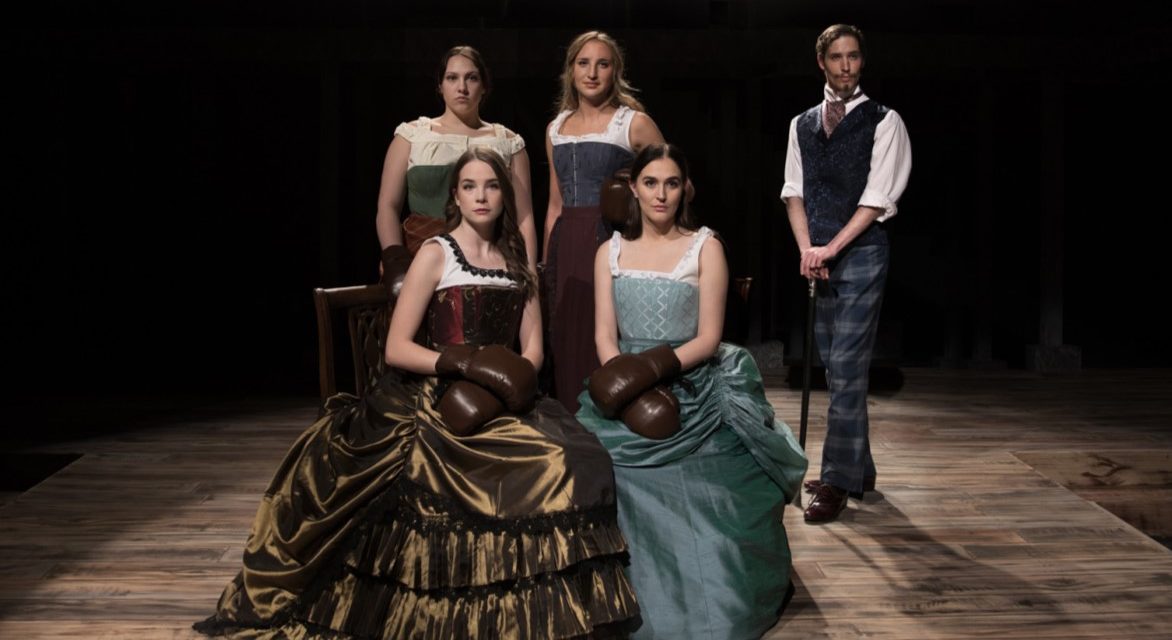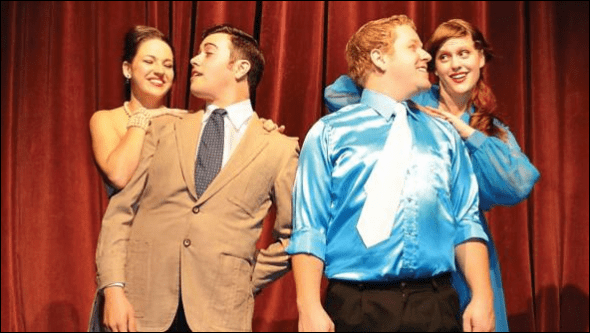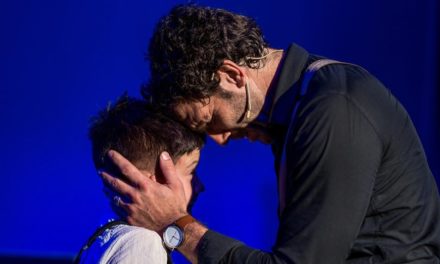SALT LAKE CITY — University theatre programs are unique in the theatre community, mostly because they have the primary mission of teaching the craft of making theatre at a professional level. Aspiring actors, designers, and technicians are given the chance to work on shows to hone their skills and learn on-the-job. Consequentially, university and college theatre departments stretch beyond the most popular plays to explore lesser-known works in order to provide a well-rounded education to to their students. The University of Utah’s latest production, The Sweet Science of Bruising, fits the needs of the department’s students but also gives its audience a fascinating look inside the obscure world of female boxers in Victorian era England.
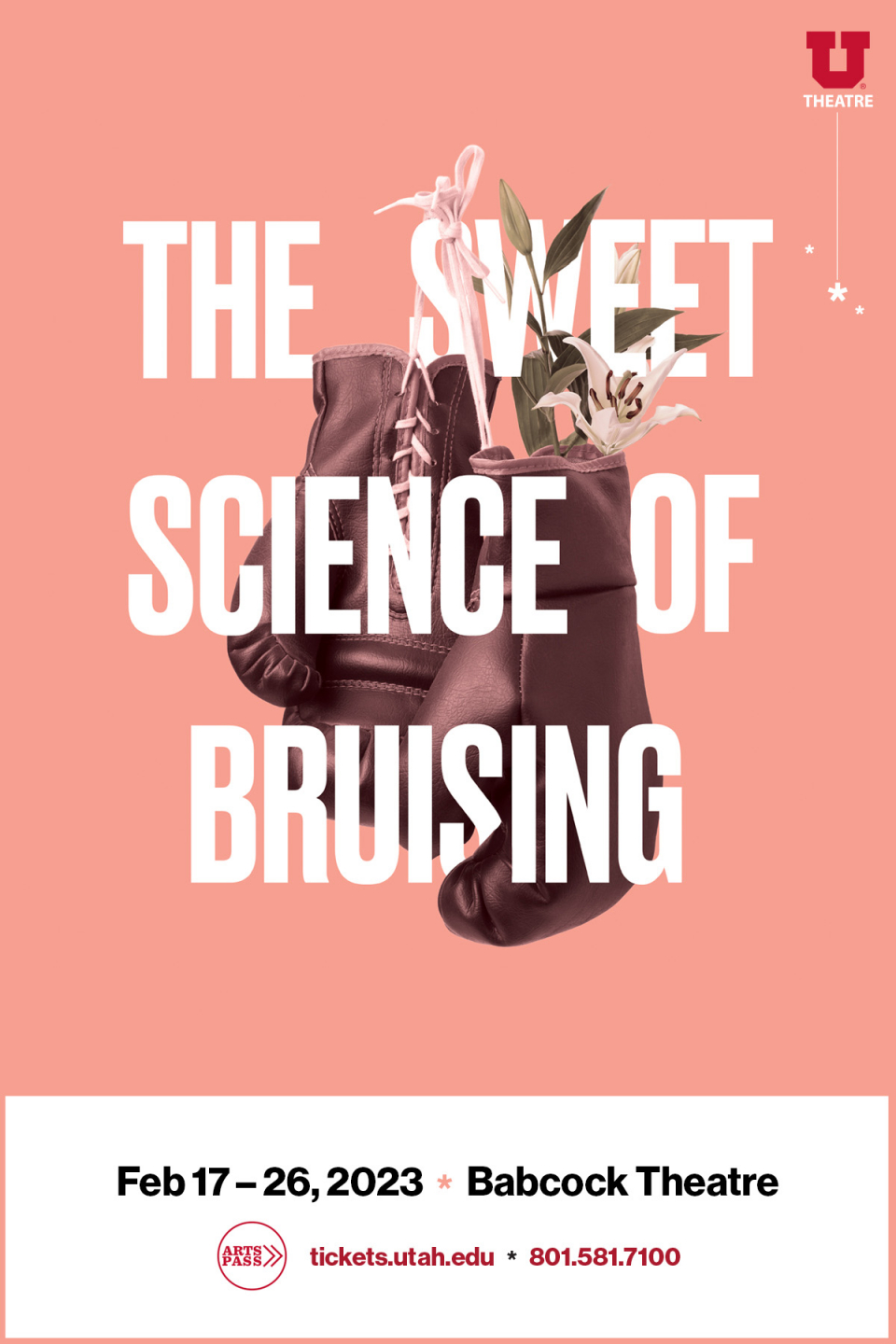
Show closes February 26, 2023.
The title and the topic sound intriguing, almost made up. When I mentioned to my husband what I was going to see, and what it was about, he actually laughed because he thought I was joking. Victorian lady boxers? Is that even a thing? I can assure you that it is (was) indeed a thing, and The Sweet Science of Bruising work presents these women in their full glory.
This play (with a script by Joy Wilkinson) follows four women from very diverse backgrounds and circumstances: Matilda “Matty” Blackwell (played by Dorothy Mayer), a streetwalker who lives by her wits; Violet Hunter (played by CoCo Berwald), a nurse with aspirations to become a doctor’ a scrappy foundling named Polly Stokes (played by Taryn McClure); and Anna Lamb (played by Hannah Ekstrom), an upper-class wife who longs to take control of her life with tragic results. Although The Sweet Science of Bruising is not a direct biography of any one woman, it is based on real events and real people that have gone unrecognized for too long.
Under the tutelage of an eccentric “manager,” Professor Charlie Sharpe (played by Tristian Osborne), the women compete for the title of Lady Boxing Champion of the World. Professor Sharpe wants to make money and sees “lady boxers” as a publicity stunt to raise money and not as an attempt to help women break out of their prescribed roles in society. Osborne was delicious as the charlatan who first realizes that this ‘oddity’ could be a great business investment. He is charming and oily and glib-tongued and outrageous. Osborne made me love him and hate by turns. He is so good at reeling us in, and then revealing his true character after we’ve already decided to forgive him for his shortcomings.
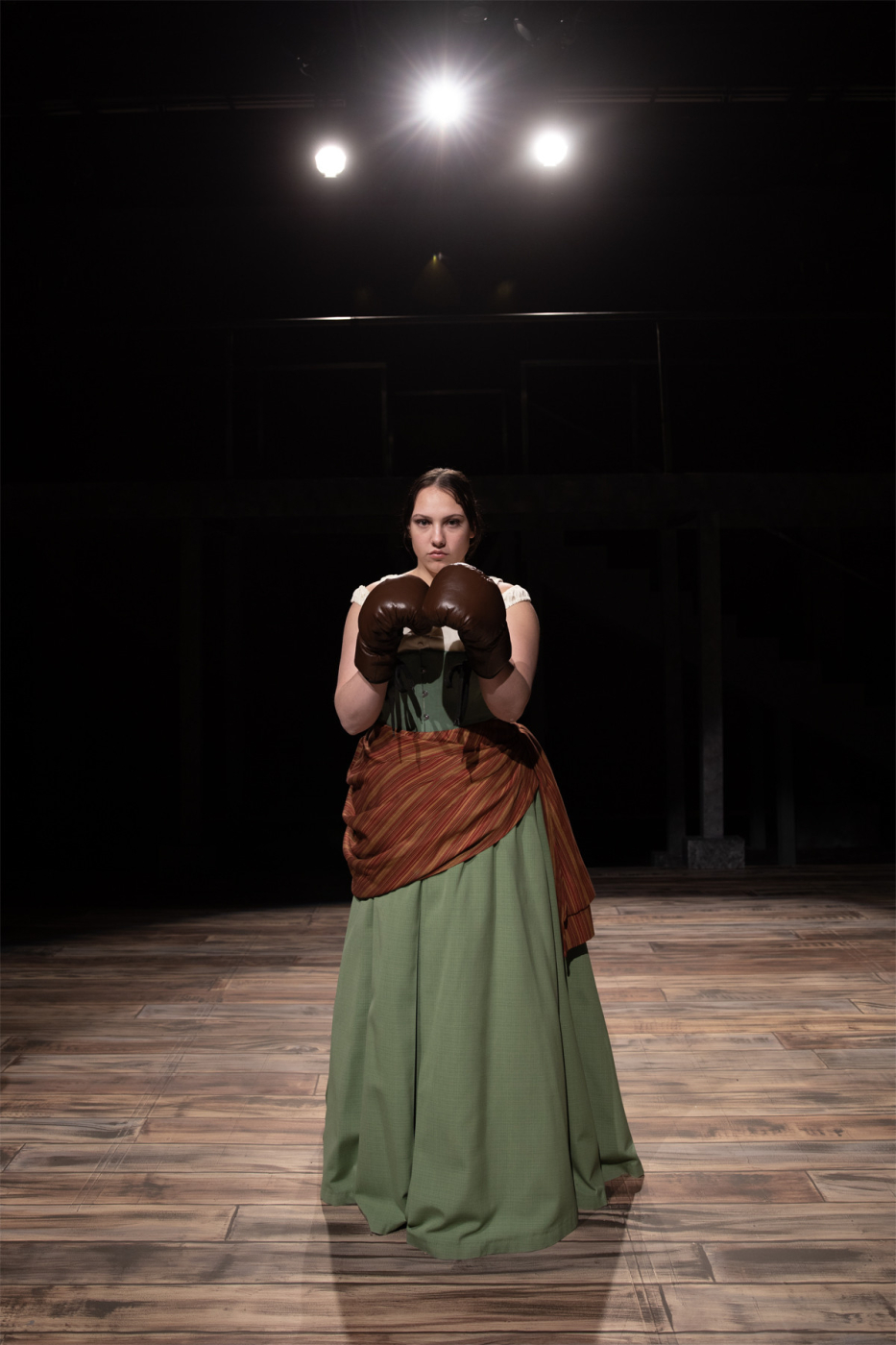
Taryn McClure as Polly. Photo by Meghan Gibson.
As these women struggle to break out of the limitations of their lives and buck against their oppressors, they experience various degrees of success. Along the way, the play touches on a number of sensitive topics, such as female “hysteria,” unwanted pregnancy, genital mutilation, and domestic abuse. As the women find an unexpected sense of freedom and solidarity in the ring, the other people in their lives try to control them in increasingly brutal ways outside of it. The tragedy and triumph of the story is that their opponents succeed, and fail, at the same time.
The four leading actresses are supremely well-cast in their roles. Their passion is clearly evident in the care they took to research everything about their characters: social status, education, family background, manners, and colloquial accent. Since the characters come from diverse backgrounds and areas of the UK, their accents were important and special attention was given to their development. Blackwell is a spunky Irishwoman, Hunter is middle class Londoner, Lamb is an upper-class wife, and Stokes sounds as if she came from Northern England, perhaps Yorkshire. The actresses were all superb in their commitment to and ability to tell their stories.
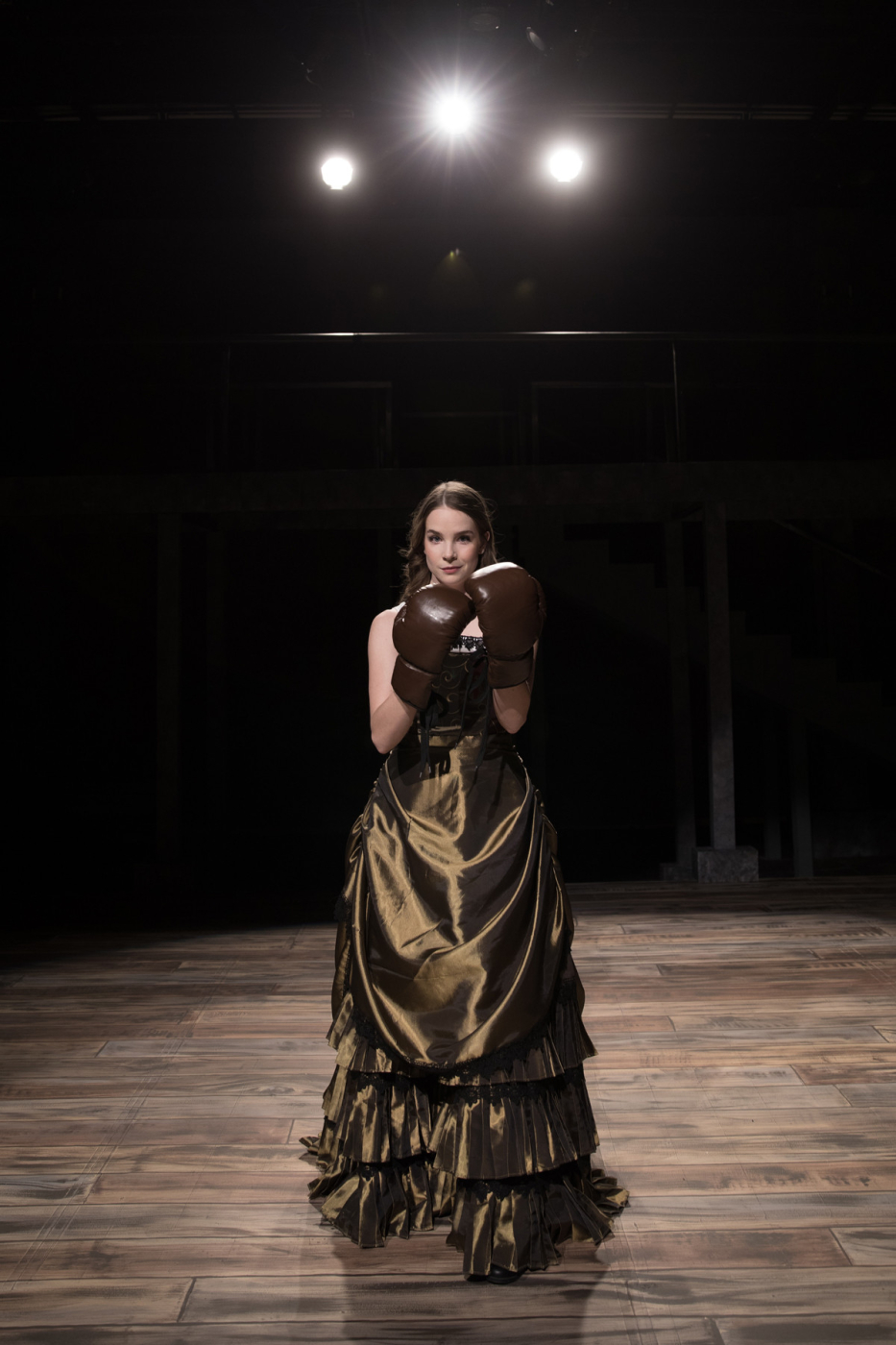
Dorothy Mayer as Matty. Photo by Meghan Gibson.
Although this is an ensemble piece, Violet Hunter feels like the centerpiece, with all the other characters connecting through her. Berwald does a lovely job in conveying Violet’s earnestness in her desire to advance her education and the freedom and confidence Violet gains through her pugilistic endeavors. Violet’s character arc was the strongest, and Berwald did justice to this fascinating woman. Mayer was equal parts charming and sassy as Blackwell, with a delightful attitude and philosophy towards life and a lilting Irish brogue that only once or twice was difficult to understand
Ekstrom’s portrayal of Anna Lamb was the most heartbreaking and devastating. She played the nuances of a society wife in an emotionally abusive marriage with subtlety and care. Her expressive face masterfully hid her emotions from her controlling husband at the same time shared her inner fear and sadness with the audience. The scene in the doctor’s office, when Lamb’s husband pressures her into undergoing female genital mutilation to “cure” her of her unnatural desires to box was especially memorable. When Lamb’s husband used their two daughters as incentive — saying that if she doesn’t agree to the procedure he will have her locked up in an asylum for hysteria and she will never see her daughters again — he effectively ties her hands while forcing her knees apart at the same time. That the procedure takes place in the office where Violet works is a genius way to make the connection between the women stronger, and the fallout is devastating. Berwald’s outrage once she fully understands what is happening to Lamb, and her despair and horror when she realizes that she can do absolutely nothing to stop it. The reaction is something that many women, many people, can understand. The solid ensemble rounds out a talented cast as they step into and out of the remaining roles: doctor, referee, aunt, maid, friend, to flesh out the world of the lady boxers.
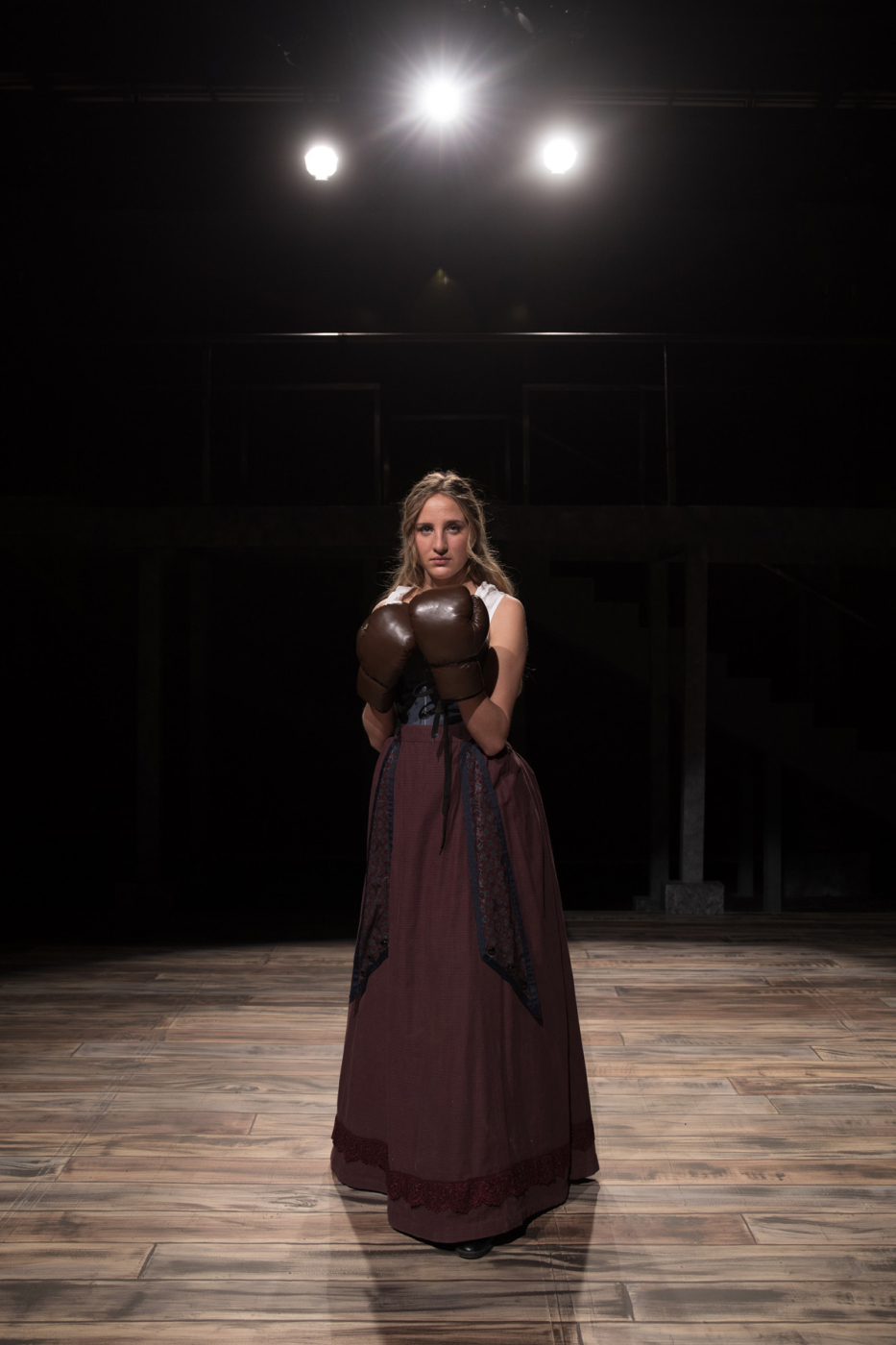
Coco Berwald as Violet. Photo by Meghan Gibson.
Director Alexandra Harbold has done a masterful job of telling this story in a smoothly transitioning vignette style. Harbold peels back layer after layer of the story to expose the issues at work underneath the surface. The scene with Lamb and Hunter in the doctor’s office is haunting in the way that it was staged: nothing was too graphic and nothing was spoken of explicitly, but all was very clear what was happening. The boxing bouts were well-rehearsed but felt tentative, too careful. Fight coordinator Ariane Lemke has trained her actors well, but they all felt cautious, afraid to really lean into the moves lest someone get bumped.
The design work was not credited directly in the program, instead listing the faculty advisors for each area, but they all did wonderful work that strengthened the story and felt unified. The set design (faculty advisor Gage Williams) brings a utilitarian feel of Hamilton to mind, with wooden platforms and stairwells that provide many nooks and corners for the story to find its footing. The deceptive simplicity belies the hours of building and painting that it must have taken to create. The lighting design (faculty advisor Michael J. Horejsi) was brilliant in that it effectively focused attention wherever it needed to be, without being obvious and glaring. Mood and emotion and location were all clearly established without being overbearing.
The costume design (faculty advisor Brenda van der Wiel) allowed the clothing to reveal information about each character’s background. As the women created their own place in society, they slowly abandoned the corseted, constrained, proper clothing—layer after layer—until they are fighting without corsets, wearing only a chemise and petticoat. By today’s standards of dress the boxers are still covered completely, but for their time period, it would be scandalous. The dramaturgy mentor Mark Fossen and fight choreographer Ariane Lemke also added immeasurable layers of authenticity and depth to the production.
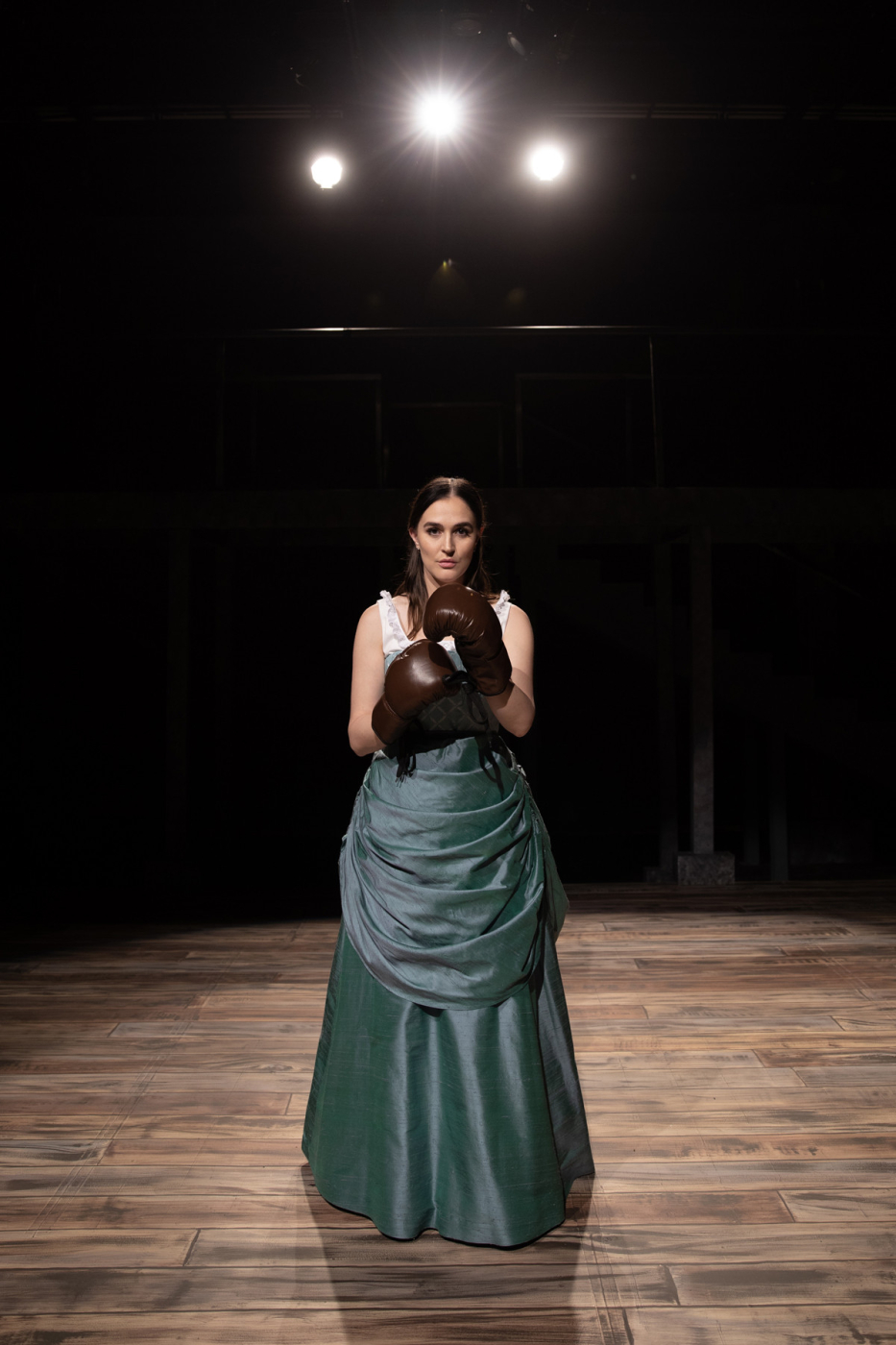
Hannah Ekstrom as Anna. Photo by Meghan Gibson.
The only negative of The Sweet Science of Bruising was the structure of Wilkinson’s script. Act one clips along fine, introducing the characters and situations, building the story, and introducing the conflicts. But act two felt overly long, with one too many bouts and a parade of personal and public tragedies. With too much happening for too long, it became difficult to maintain my initial excitement and intrigue through to the end of the performance.
I strongly recommend going to see The Sweet Science of Bruising at the University of Utah. While the main goal is to train young artists, this lovely show provides its with a unique, innovative show that adds richness and depth to the typical theatre experience in Utah. The Sweeet Science of Bruising is well worth its audience’s time and money, and I recommend it without hesitation.

These reviews are made possible by a grant from the Salt Lake County Zoo, Arts, and Parks program.

